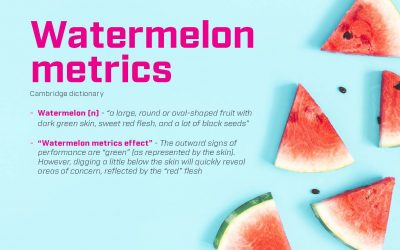‘We only want solutions that are in the Magic Quadrant on our shortlist’, a customer answered to my question how they came up with the candidates for replacing their current ITSM tool. Now I love bold statements but I love challenging them even more. So a simple next question was: ‘Why?’
The answer contained those words that make us all feel comfortable: established, market leaders, safe bet, proven technology, low continuity risk and ‘because Gartner says so’. Although I made that last one up, it seems very true for many decision makers. Now I am not doubting the knowledge of Gartner analysts by any means but I do have my doubts about the validity of their findings for many of the organisations that treat these as the only and absolute truth.
As you probably know, the Magic Quadrant is a 2 dimensional model that combines ‘Completeness of Vision’ with ‘Ability to Execute’. The chart is divided into 4 areas: Niche Players (Low scores on both axes), Visionaries (High ‘Completeness of Vision’ but low ‘Ability to Execute’), Challengers (Low ‘Completeness of Vision’ but High ‘Ability to Execute’) and Leaders (High scores on both axes). The common perception is that the Leaders quadrant is the most obvious choice when looking for the best ITSM solution. Although Gartner does not necessarily state this by the way (see the ‘Context’ section in this article).
The Ability to Execute is made up of all kinds of aspects varying from product details to sales and marketing capabilities, customer experiences and vendor operations. Interesting to know is that Sales Execution contributes more to the ‘Ability to Execute’ score than Customer Experience and Market Responsiveness (Sticking to a clear roadmap, delivering upgrades and developing new features). So ‘Ability to Sell’ might be a better term.
Completeness of Vision is deducted from ‘Market Understanding’ (which is explained as understanding what customers want and being able to add a vision to this). Other aspects are product, marketing and sales strategies, business models, innovation and geography of the vendor. For this score, Marketing Strategy and Geographic Strategy are equally important as Product Strategy and Innovation. So a high score on this axis means a complete vision from a vendor perspective, not necessarily a vision that helps you reaching your ITSM related goals.
As always, the devil is in the details. Every year, Gartner uses Inclusion and Exclusion criteria that determine if a vendor is listed or not. Makes perfect sense from an analysts perspective but can heavily influence the usefulness of the results for your organisation. The 2016 version required a vendor to derive at least $19 million in annual revenue from ITSM products and have a presence in at least three of the following regions: North America, South America, EMEA, Asia/Pacific region or Australia. This basically disqualifies about every very innovative vendor that really has something new to offer. At least for the first 3-5 years of their existence. So vendors that offer solutions for today’s problems like Service Integration And Management (SIAM) or Knowledge-Centered Support (KCS) will likely not be there for the next few years.
Other aspects that are not (explicitly) included by Gartner are aspects like technology and platform. Many of the included vendors use what I would call a first generation SaaS offering. The offering is basically a hosted on premise version of their product. This means no agility, no easy scalability, potential issues with upgrades and a lot of maintenance for the vendor. We see that many customers of these vendors still run on old versions of the software because of the high costs of migration. And more maintenance for a vendor means less money for innovation. Which is also a trend we spotted: most innovation comes from mergers and takeovers which increases the technical challenges even further. Products are often glued together, rather than being really integrated.
Many of the listed vendors sell toolbox solutions. With these solutions you can basically build whatever you want. But it also requires you to know what to build. One of the criteria for ‘Completeness of Vision’ was:
Functions that assist service brokers in the integration of service delivery across multiple providers (regardless of who manages the contract) throughout the line of service. This goes beyond traditional approaches to vendor management.
I know for a fact that the majority of the vendors listed in the 2016 edition do not offer the required functionality to support this out of the box. Yes, you can probably build this with a toolbox solution and a lot of external consultancy. But at what price? And when you want to upgrade to a new version of the product? To me, ‘Completeness of Vision’ means that a vendor understands the challenges of a modern IT organisation and that the out of the box product(s) contains all required functionality to overcome these challenges. And not just offering me the tools to build the solutions myself.
If the ITSM application runs on a platform, speed of development is likely to be very high. Developers can simply ‘hook in’ existing platform functionality like mobile access, web service APIs, self-service and social media integration rather than developing all this from scratch. Applications that run on the same platform like ITSM, CRM and ERP are integrated by default. They simply use the same objects for storing information about customers, services, products and contracts. So if your organisation is serving external customers you have a strong need for a 360 degree view of your customer and its interactions with your organisation. Harmonizing business applications (including ITSM) on a single platform might be the quickest and most efficient way to achieve this.
“The exiting new kid on the block will not be in the Magic Quadrant”
So Gartner made some choices about what (not) to include in their Magic Quadrant, and they have every right to do so. It is up to you to use this information wisely and determine if the listed vendors really offer solutions for your challenges. Dismissing vendors (and therefore products) just because they are not in the Magic Quadrant can be a bad mistake. As bad as putting a vendor on your shortlist just because they are in the Magic Quadrant.



